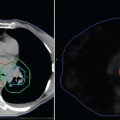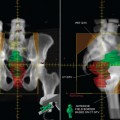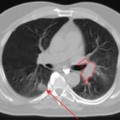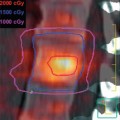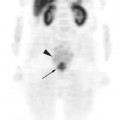chapter 16 Economic Considerations of PET Scanning in Diagnosis, Staging, and Radiation Therapy Treatment Planning
This chapter will address economic or cost-effectiveness of 18F-fluoro-deoxy-D-glucose
Cost-Effectiveness of PET Scanning in the Workup and Diagnosis of Malignancies
For PET scanning to be considered costeffective compared to a strategy not including PET scanning, the strategy containing PET scanning must either reduce overall cost of care or improve the chosen outcome metric (e.g., disease-free or overall survival). A cost-effectiveness analysis can be performed by collecting and comparing cost and outcome data for patients with and without PET scans or by using decision-analysis techniques. Valk and colleagues evaluated the diagnostic accuracy of whole body PET scanning in the staging of patients with non-small cell lung cancer, the detection of recurrent colorectal cancer, the diagnosis of metastatic melanoma, and the staging of advanced head and neck cancer.1 PET scanning was more accurate compared to standard anatomic imaging for determining the presence and extent of tumor and in the determination of resectable disease. PET scanning also improved patient management by avoiding surgery in patients with unresectable disease. Costs were determined from Medicare reimbursement rates and the PET scan costs were estimated at US$1800. These authors found the savings from using PET imaging ranged from 2:1 to 4:1 depending upon the indication, with the majority of savings resulting from not performing unnecessary surgeries in patients having metastatic disease.
Sloka and colleagues evaluated the costeffectiveness of adding PET scanning to the staging diagnostic algorithm for stage I and II breast cancer, recurrent colorectal cancer, and non-small cell lung cancer in Canada.2 The aggregate estimated “break even” cost of a PET study was reported to be C$2195, well below the expected cost per study. PET scanning, it was concluded, appeared to be cost-effective in most jurisdictions in Canada for the staging of cancer.
Non-Small Cell Lung Cancer
The majority of studies evaluating the cost-effectiveness of PET scanning in the diagnosis and workup of patients with solitary pulmonary nodules (SPN) and lung cancer have been performed outside of the United States because of limited health care budgets and resources in those countries. In Australia, Yap and colleagues used a decision-tree model to compare whole body PET scanning with selective mediastinoscopy to routine staging mediastinoscopy.3 An average cost-savings of AU$2128 per patient was realized with routine PET scanning with selective mediastinoscopy saving AU$2128 per patient while reducing inappropriate surgery. In France, decision analysis was used to assess PET scanning in the diagnosis of SPN. This study found computed tomography (CT) plus-PET to be more cost-effective than PET and anatomic imaging or watchful waiting. CT-PET was the most cost-effective procedure when the malignancy risk for the SPN was in the range of 5.7% to 87%, while watchful waiting was the most cost-effective strategy when the risk of malignancy was 0.3% to 5%.4
In Italy, Gugiatti and colleagues reported a cost-minimization analysis evaluating PET scanning in the workup of SPN and staging of patients with non-small cell lung cancer. A reduction of overall diagnostic costs by approximately 50 per patient in those with SPN was reported by reducing inappropriate invasive diagnostic procedures and by 108 per patient when PET scanning was added to the diagnostic path for patients with non-small cell lung cancer. In Germany, decision analysis compared 18F-sodium fluoride (NaF) PET scanning to single photon emission tomography (SPECT) and planar bone scans in the workup of patients with non-small cell lung cancer.5 The incremental cost per additional correctly diagnosed patient was 1272 for SPECT and 2861 for 18F-NaF PET. Although more sensitive, PET scanning was associated with higher incremental costs and may not be cost-effective compared to SPECT.
Verboom and colleagues developed a model based upon a literature review and a review of actual clinical practice of 337 patients with non-small cell lung cancer from two Dutch hospitals.6 A strategy of PET imaging after diagnostic imaging but prior to invasive staging seemed to be the most optimal according to the results of this model.
Stay updated, free articles. Join our Telegram channel

Full access? Get Clinical Tree


